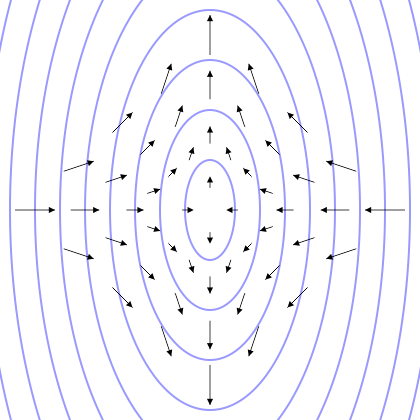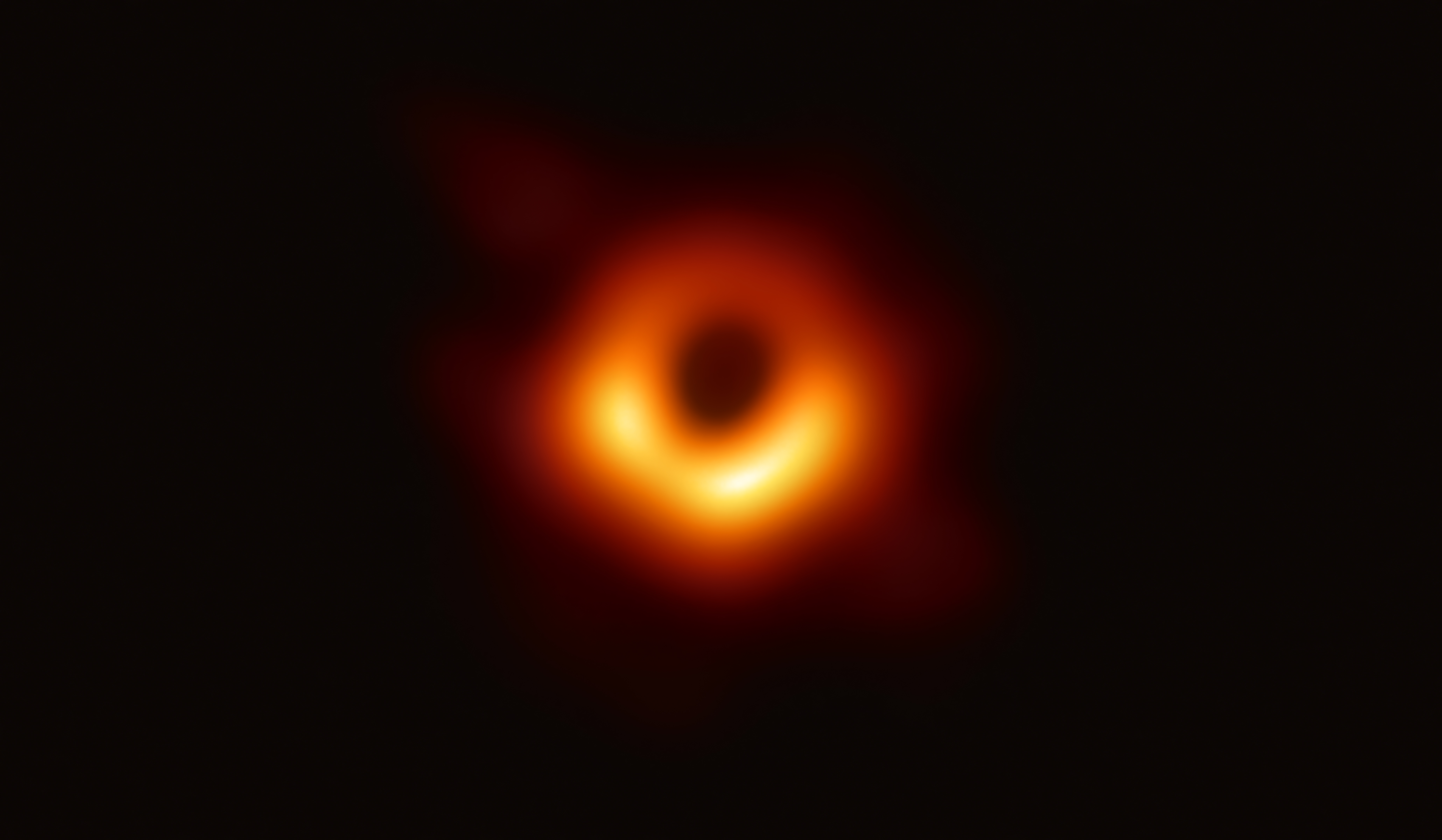|
Submillimeter Astronomy
Submillimetre astronomy or submillimeter astronomy (see spelling differences) is the branch of observational astronomy that is conducted at submillimetre wavelengths (i.e., terahertz radiation) of the electromagnetic spectrum. Astronomers place the submillimetre waveband between the far-infrared and microwave wavebands, typically taken to be between a few hundred micrometres and a millimetre. It is still common in submillimetre astronomy to quote wavelengths in 'microns', the old name for micrometre. Submillimetre observations can be used to trace emission from gas and dust, including the CI, CO, and CII lines. Sources behind this emission include molecular clouds and dark cloud cores, which can be used to clarify the process of star formation from earliest collapse to stellar birth, by determining chemical abundances in dark clouds and the cooling mechanisms for the molecules which comprise them. Other sources include protoplanetary discs, dusty starburst galaxies in ... [...More Info...] [...Related Items...] OR: [Wikipedia] [Google] [Baidu] |
Protoplanetary Disk
A protoplanetary disk is a rotating circumstellar disc of dense gas and dust surrounding a young newly formed star, a T Tauri star, or Herbig Ae/Be star. The protoplanetary disk may not be considered an accretion disk; while the two are similar, an accretion disk is hotter and spins much faster; it is also found on black holes, not stars. This process should not be confused with the accretion process thought to build up the planets themselves. Externally illuminated photo-evaporating protoplanetary disks are called proplyds. Formation Protostars form from molecular clouds consisting primarily of molecular hydrogen. When a portion of a molecular cloud reaches a critical size, mass, or density, it begins to collapse under its own gravity. As this collapsing cloud, called a solar nebula, becomes denser, random gas motions originally present in the cloud average out in favor of the direction of the nebula's net angular momentum. Conservation of angular momentum causes the r ... [...More Info...] [...Related Items...] OR: [Wikipedia] [Google] [Baidu] |
Water Vapour
Water vapor, water vapour, or aqueous vapor is the gaseous phase of water. It is one state of water within the hydrosphere. Water vapor can be produced from the evaporation or boiling of liquid water or from the sublimation of ice. Water vapor is transparent, like most constituents of the atmosphere. Under typical atmospheric conditions, water vapor is continuously generated by evaporation and removed by condensation. It is less dense than most of the other constituents of air and triggers convection currents that can lead to clouds and fog. Being a component of Earth's hydrosphere and hydrologic cycle, it is particularly abundant in Earth's atmosphere, where it acts as a greenhouse gas and warming feedback, contributing more to total greenhouse effect than non-condensable gases such as carbon dioxide and methane. Use of water vapor, as steam, has been important for cooking, and as a major component in energy production and transport systems since the Industrial Revolution. W ... [...More Info...] [...Related Items...] OR: [Wikipedia] [Google] [Baidu] |
Infrared Astronomy
Infrared astronomy is a sub-discipline of astronomy which specializes in the astronomical observation, observation and analysis of astronomical objects using infrared (IR) radiation. The wavelength of infrared light ranges from 0.75 to 300 micrometers, and falls in between Visible light, visible radiation, which ranges from 380 to 750 nanometers, and terahertz radiation, submillimeter waves. Infrared astronomy began in the 1830s, a few decades after the discovery of infrared light by William Herschel in 1800. Early progress was limited, and it was not until the early 20th century that conclusive detections of astronomical objects other than the Sun and Moon were made in infrared light. After a number of discoveries were made in the 1950s and 1960s in radio astronomy, astronomers realized the information available outside the visible wavelength range, and modern infrared astronomy was established. Infrared and optical astronomy are often practiced using the same telescopes, as the ... [...More Info...] [...Related Items...] OR: [Wikipedia] [Google] [Baidu] |
Very-long-baseline Interferometry
Very-long-baseline interferometry (VLBI) is a type of astronomical interferometry used in radio astronomy. In VLBI a signal from an astronomical radio source, such as a quasar, is collected at multiple radio telescopes on Earth or in space. The distance between the radio telescopes is then calculated using the time difference between the arrivals of the radio signal at different telescopes. This allows observations of an object that are made simultaneously by many radio telescopes to be combined, emulating a telescope with a size equal to the maximum separation between the telescopes. Data received at each antenna in the array include arrival times from a local atomic clock, such as a hydrogen maser. At a later time, the data are correlated with data from other antennas that recorded the same radio signal, to produce the resulting image. The resolution achievable using interferometry is proportional to the observing frequency. The VLBI technique enables the distance between t ... [...More Info...] [...Related Items...] OR: [Wikipedia] [Google] [Baidu] |
Event Horizon Telescope
The Event Horizon Telescope (EHT) is a Astronomical interferometer, telescope array consisting of a global network of radio telescopes. The EHT project combines data from several very-long-baseline interferometry (VLBI) stations around Earth, which form a combined array with an angular resolution sufficient to observe objects the size of a supermassive black hole's event horizon. The project's observational targets include the two black holes with the largest angular diameter as observed from Earth: the black hole at the center of the Type-cD galaxy, supergiant elliptical galaxy Messier 87, and Sagittarius A*, at Galactic Center, the center of the Milky Way. The Event Horizon Telescope project is an international collaboration that was launched in 2009 after a long period of theoretical and technical developments. On the theory side, work on the photon orbit and first simulations of what a black hole would look like progressed to predictions of VLBI imaging for the Galactic Cente ... [...More Info...] [...Related Items...] OR: [Wikipedia] [Google] [Baidu] |
Neutrino
A neutrino ( ; denoted by the Greek letter ) is an elementary particle that interacts via the weak interaction and gravity. The neutrino is so named because it is electrically neutral and because its rest mass is so small ('' -ino'') that it was long thought to be zero. The rest mass of the neutrino is much smaller than that of the other known elementary particles (excluding massless particles). The weak force has a very short range, the gravitational interaction is extremely weak due to the very small mass of the neutrino, and neutrinos do not participate in the electromagnetic interaction or the strong interaction. Consequently, neutrinos typically pass through normal matter unimpeded and with no detectable effect. Weak interactions create neutrinos in one of three leptonic flavors: # electron neutrino, # muon neutrino, # tau neutrino, Each flavor is associated with the correspondingly named charged lepton. Although neutrinos were long believed to be mas ... [...More Info...] [...Related Items...] OR: [Wikipedia] [Google] [Baidu] |
Gravitational Wave
Gravitational waves are oscillations of the gravitational field that Wave propagation, travel through space at the speed of light; they are generated by the relative motion of gravity, gravitating masses. They were proposed by Oliver Heaviside in 1893 and then later by Henri Poincaré in 1905 as the gravitational equivalent of Electromagnetic radiation, electromagnetic waves. In 1916, Albert Einstein demonstrated that gravitational waves result from his general theory of relativity as ripples in spacetime. Gravitational waves transport energy as gravitational radiation, a form of radiant energy similar to electromagnetic radiation. Newton's law of universal gravitation, part of classical mechanics, does not provide for their existence, instead asserting that gravity has instantaneous effect everywhere. Gravitational waves therefore stand as an important relativistic phenomenon that is absent from Newtonian physics. Gravitational-wave astronomy has the advantage that, unlike elec ... [...More Info...] [...Related Items...] OR: [Wikipedia] [Google] [Baidu] |
Quantum Gravity
Quantum gravity (QG) is a field of theoretical physics that seeks to describe gravity according to the principles of quantum mechanics. It deals with environments in which neither gravitational nor quantum effects can be ignored, such as in the vicinity of black holes or similar compact astrophysical objects, as well as in the early stages of the universe moments after the Big Bang. Three of the four fundamental forces of nature are described within the framework of quantum mechanics and quantum field theory: the Electromagnetism, electromagnetic interaction, the Strong interaction, strong force, and the Weak interaction, weak force; this leaves gravity as the only interaction that has not been fully accommodated. The current understanding of gravity is based on Albert Einstein's general theory of relativity, which incorporates his theory of special relativity and deeply modifies the understanding of concepts like time and space. Although general relativity is highly regarded for ... [...More Info...] [...Related Items...] OR: [Wikipedia] [Google] [Baidu] |
Supermassive Black Hole
A supermassive black hole (SMBH or sometimes SBH) is the largest type of black hole, with its mass being on the order of hundreds of thousands, or millions to billions, of times the mass of the Sun (). Black holes are a class of astronomical objects that have undergone gravitational collapse, leaving behind spheroidal regions of space from which nothing can escape, including light. Observational evidence indicates that almost every large galaxy has a supermassive black hole at its center. For example, the Milky Way galaxy has a supermassive black hole at its center, corresponding to the radio source Sagittarius A*. Accretion of interstellar gas onto supermassive black holes is the process responsible for powering active galactic nuclei (AGNs) and quasars. Two supermassive black holes have been directly imaged by the Event Horizon Telescope: the black hole in the giant elliptical galaxy Messier 87 and the black hole at the Milky Way's center (Sagittarius A*). Descr ... [...More Info...] [...Related Items...] OR: [Wikipedia] [Google] [Baidu] |
Cosmic Microwave Background
The cosmic microwave background (CMB, CMBR), or relic radiation, is microwave radiation that fills all space in the observable universe. With a standard optical telescope, the background space between stars and galaxies is almost completely dark. However, a sufficiently sensitive radio telescope detects a faint background glow that is almost isotropic, uniform and is not associated with any star, galaxy, or other astronomical object, object. This glow is strongest in the microwave region of the electromagnetic spectrum. The accidental Discovery of cosmic microwave background radiation, discovery of the CMB in 1965 by American radio astronomers Arno Allan Penzias and Robert Woodrow Wilson was the culmination of work initiated in the 1940s. The CMB is landmark evidence of the Big Bang scientific theory, theory for the origin of the universe. In the Big Bang cosmological models, during the earliest periods, the universe was filled with an Opacity (optics), opaque fog of dense, hot ... [...More Info...] [...Related Items...] OR: [Wikipedia] [Google] [Baidu] |








